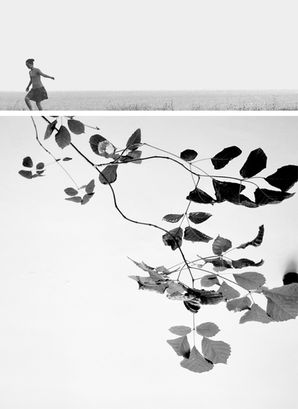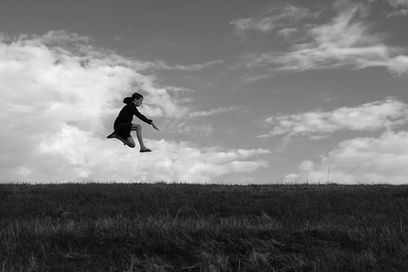
THE CURIOSITY GAP
February 10, 2023
INTERVIEW
PHOTOGRAPHY Samuel Ioannidis
INTERVIEW Melanie Meggs
Samuel Ioannidis stands on the street, camera in hand, looking to capture the moments that unfold around him. Having always had an eye for capturing moments, Samuel bought his first real camera four years ago and has never looked back. His passion for street photography has led him on a journey of exploration and discovery, unearthing hidden gems and unexpected beauty in his home city and beyond.
Rather than a fleeting glance at the world around him, Samuel is driven to capture a glimpse into the stories that reside in his photographs; to capture a piece of time and to communicate his story through his images. His goal is to create images that captivate and draw viewers into a curiosity gap, a contrast to the dizzying pace of modern life and social media.

“I wanted to see the world through my lens, with lines and forms that reminded me of geometry. When I put this together I set myself up as a photographer who searches for beauty through light, color, and lines.”
IN CONVERSATION WITH SAMUEL IOANNIDIS
THE PICTORIAL LIST: Hello Samuel, please tell us about yourself. What would you say first drew you to photography?
SAMUEL IOANNIDIS: I was born in Nuremberg, Germany, as a child of immigrants from Greece that came to Germany in 1960. Growing up here in Nuremberg, in my youth, I first came in contact with my fathers camera. I remember fondly of taking the holiday photographs with disposable cameras back then. I think that is what drew me into photography, having the responsibility for the family photographs and I liked it.
TPL: You told us that you are obsessed with street photography. What is it that you love about this genre? How would you describe your photography, and what would you say you are always trying to achieve artistically? What is the story you want to tell with your photographs?
SI: When I moved out of my parents place I lost the connection to photography for several years. Then I bought a cheap point & shoot camera for my vacations and tried to take some nice shots with it. But still, it didn't ‘click’ just yet for me. Then I remember seeing a Fuji X-E1 at the house of a friend and somehow I fell in love with the design, the look and feel, just the all around aesthetics of this camera. I bought a used Fuji X-E1 and was hooked again into photography. I got my first taste of street photography after attending a public street photo walk with a local street photo collective. The possibilities of taking photographs just being on the streets in the middle of daily life amazes me still today.
The last couple of years, my style has moved towards a more minimalistic style. I try to avoid too many colors and concentrate on compositions with high contrast scenes. Artistically I want to achieve photographs that generate a curiosity gap for the viewer, capturing their attention for longer than a second, as a contrast to the fast paced social media. To be honest, I don’t try to tell a specific story with my photographs. I use my intuition and let it lead me without searching for a specific story. But I definitely do want to explore storytelling and thinking of creating a series in the future.
TPL: Could you tell us what living in Nuremberg, Germany has inspired in your work? What special qualities unique to your town/city influence your street and the way you portray your community? Outside of your hometown do you have/had a favorite place to photograph?
SI: Nuremberg has many sides. You can find many historical buildings in the old city centre with a rich history, but also many new and modern buildings that you can integrate in your photography. There is also a very active photography community you can find for any genre. I'm an active member of a local street photography collective, Nürnberg Unposed Collective (www.nürnbergunposed.de), where I have found my photographic “home” so to say.
Outside of my hometown I would love to visit New York City and Brooklyn again. But also the capitals of Europe are a destination for me in the future.
TPL: When you take pictures, do you usually have a concept in mind of what you want to shoot, or do you let the images just "come to you", or is it both? Please describe your process.
SI: Inspired by my favorite street photographer Siegfried Hansen, I try to use a concept the most of the time. Which means I am trying to set myself so called triggers. If I go out taking photographs, for example, one of those triggers could be a specific color that someone wears, or for example, hats. Of course I don’t close myself off to other opportunities, which means I'm also on the lookout for good and soft light. But it helps to keep me focused if I already have an idea of what I want to achieve on a specific street session.
TPL: What is the most rewarding part of being a street photographer for you? What are some challenges that you have faced?
SI: The most rewarding thing I am experiencing has to do a lot with the street photography community, here in Germany, and elsewhere. Especially my good friends from the Nuremberg Unposed Collective. We consider ourselves like a small group of sworn-in good friends or even family who want to raise the acceptance of street photography here in Germany by organising exhibitions and meetups (small and big). But of course, also to have a lot of fun in the process.
The biggest challenge so far, which continues to be my biggest challenge, is to keep my motivation up, especially if there are days where you don't have any photograph that you like. But I think the key to stay motivated is to stay humble, and to just appreciate the scenes and photographs that are not the best you have encountered yet.
TPL: Is it impossible for you not to be constantly on the lookout for a moment to be captured?
SI: Good question! Never thought about this, but yes. Definitely! I find myself keeping on the lookout, even if I don't have any specific camera with me (except my cellphone´s cam) or while running errands. But not always, as life is happening and is sometimes also very stressful. That's why I see photography also as a method of mindfulness meditation.
Artistically I want to achieve photographs that generate a curiosity gap for the viewer, capturing their attention for longer than a second, as a contrast to the fast paced social media.

TPL: How do you manage a work/photography balance?
SI: If you are motivated it always seems easier to find time. But yes, a sort of plan during the week for some hours where you will be only focusing on my photography helps to stay in the ‘flow’.
TPL: Do you have any favorite artists or photographers you would like to share with us, and the reason for their significance?
SI: Too many, that I can't mention here because the list would be too long. But I want to mention all those street photography collectives and solo street photographers in Germany that are part of a wonderful and great community.
But to play by the rules, I will mention two of them:
German street photographer Siegfried Hansen, who has helped me and many others also finding their own styles by establishing a specific system.
Street photographer Pia Parolin, for her amazing energy, motivation and effort she puts into her work. Not only in her own photography, but also in many other fields. Like her great books, projects and her community work.
TPL: If you could just choose one photographer to shoot alongside for a day...who would you choose? And why?
SI: Joel Meyerowitz. He was one of the first street photographers that I have spent time researching about him, his photographs and specific style. I'm quite sure he is a great mentor.
TPL: What was the first camera you ever held in your hand, brought to eye, and released a shutter on? What is the camera you use now and your preferred focal length? Does the equipment you use help you in achieving your vision in your photography? Is there anything on your wishlist?
SI: The first camera I ever have used was a one-time use analog camera when I was a kid and used them every once in a while during my youth. The first real camera was also an analog point and shoot camera from Canon. Many years later (around 2015), I just had the urge to get a camera for my vacations. A friend of mine showed me his Fujifilm X-E1 and I was totally hooked from the design, look and feel and the all-over aesthetics and wonderful colors. Since then I have stayed with Fujifilm. I use an Xpro3 at the moment. I love the design with the hidden monitor that helps you stay in the Flow, but also the rangefinder style of this camera. My preferred focal lengths are 23mm and 35mm (APS-C). To experiment a little bit more I am planning on getting a 50mm lens. But my all round focal length is and will be 35mm.
To me personally it is very important to have a camera that you love to take in your hand because of its aesthetics, but also because you know it perfectly in and out. Of course I could take street photographs with any smartphone or any other camera as well. But I would always prefer my Fuji Xpro3 in every sense.
TPL: Are there any special projects that you are currently working on that you would like to let everyone know about? What are some of your photography goals? Where do you hope to see yourself in five years?
SI: I am proud to announce that my good friends and I from Nuremberg Unposed Collective are hosting the annual street photography community meetup in our hometown Nuremberg on the 8th of July. More information can be found at: www.meetandstreet.de . It is a meetup of the German street photography scene where we just meet, talk and have fun together. But we will host also a public gallery with prints from the community that everybody can take with them and give a voluntarily donation. We are also working together with a local charity organisation for social projects.
TPL: “When I am not out photographing, I (like to)…
SI: Enjoy the company of my good friends and go to the cinema.”

Samuel Ioannidis is an example of how creativity and passion can lead to exploration and discovery. His talent for street photography has allowed him to uncover hidden gems and unexpected beauty, both in his home city and further afield. Through his images, Samuel is able to capture moments that are not only captivating but also provide a contrast to the dizzying pace of modern life and social media.



































